
Butterflies and moths are some of the most beautiful and fascinating insects in the world. But did you know that they start their life journey as larvae? These larvae have a wormlike body with three pairs of legs and several pairs of appendages that are similar to legs.
Caterpillars may be hairy, have warning or threatening coloration, or have the ability to camouflage. There’s so much to admire about caterpillars. These majestic tiny critters come in all shapes, sizes, colors, and some never morph into butterflies. A few of them are even covered with poison.
They’re wiggly, fun, intriguing, and filled with individual stories to tell. With so much to explore and discover about caterpillars, let’s discuss the world’s top poisonous ones.
How To Identify A Poisonous Caterpillar

First, let’s clarify the difference between poison and venom. Both of these terms are often used interchangeably but are not the same thing. The difference is in the way they are delivered.
Poison is a toxin that gets into your body through the skin, mouth, or nose. Venom is a toxin that is injected into the body. Examples of venom injection could be a bee sting, snake bite, or spider bite.
Not all caterpillars with poisonous attributes mean they are dangerous, and they don’t sting as bees or wasps do. The most significant feature to look for is urticating hairs. They can look barbed or like spikes that spread throughout a caterpillar’s worm-like body. Sometimes urticating hairs are along the caterpillar’s spine.
These tiny hairs can stick to your skin and break off, causing irritation and discomfort. Keep in mind that not everyone will suffer a dramatic reaction. However, there are species in South America that have been known to cause death.
The toxicity in some caterpillars acts as a defense mechanism against predators. Before deciding to pick up one of these adorable insects, make sure you know what you’re touching. We’ll cover how to treat a poisonous caterpillar “bite” later. For now, let the countdown begin on the 15 poisonous caterpillars.
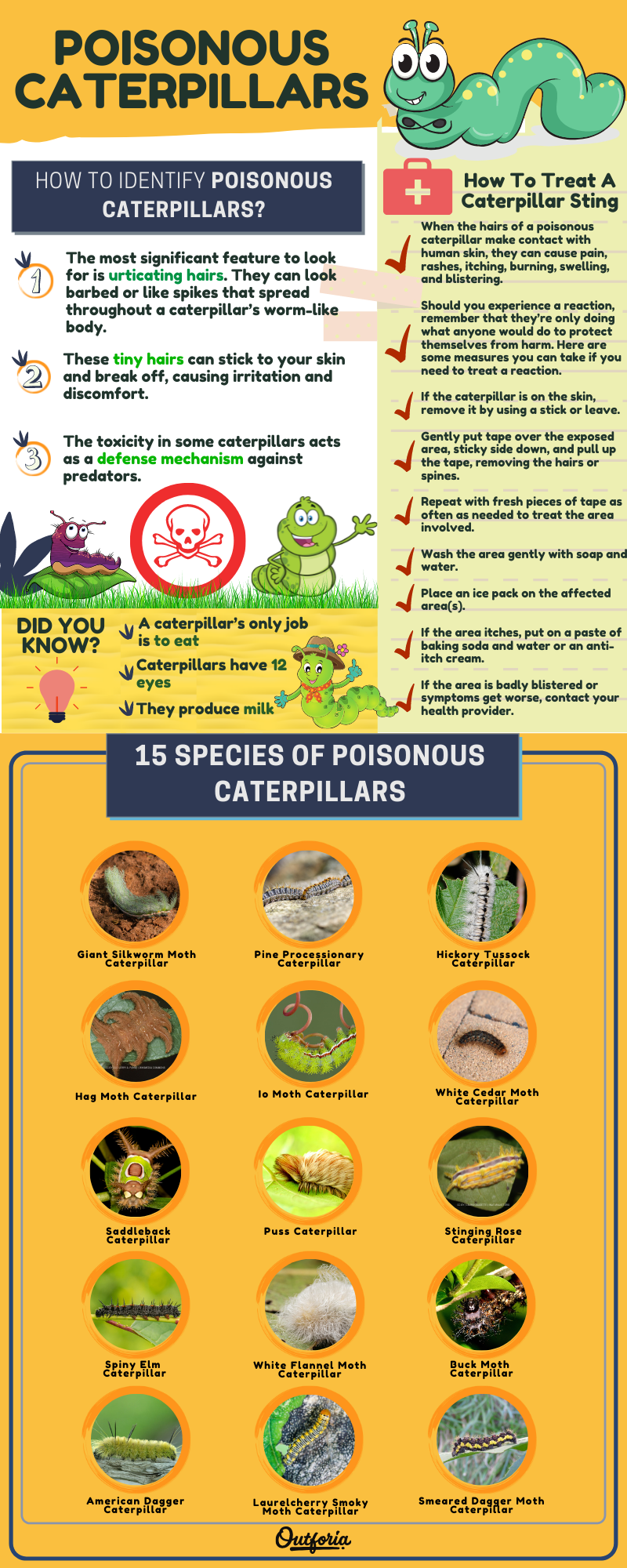
Share This Image On Your Site
<a href="https://outforia.com/poisonous-caterpillars/"><img style="width:100%;" src="https://outforia.com/wp-content/uploads/2022/01/Poisonous-caterpillars-infographics-01262022.png"></a><br>Poisonous Infographics Infographic by <a href="https://outforia.com">Outforia</a>17 Poisonous Caterpillars to Watch Out For
1. Giant Silkworm Moth Caterpillar (Lonomia obliqua)
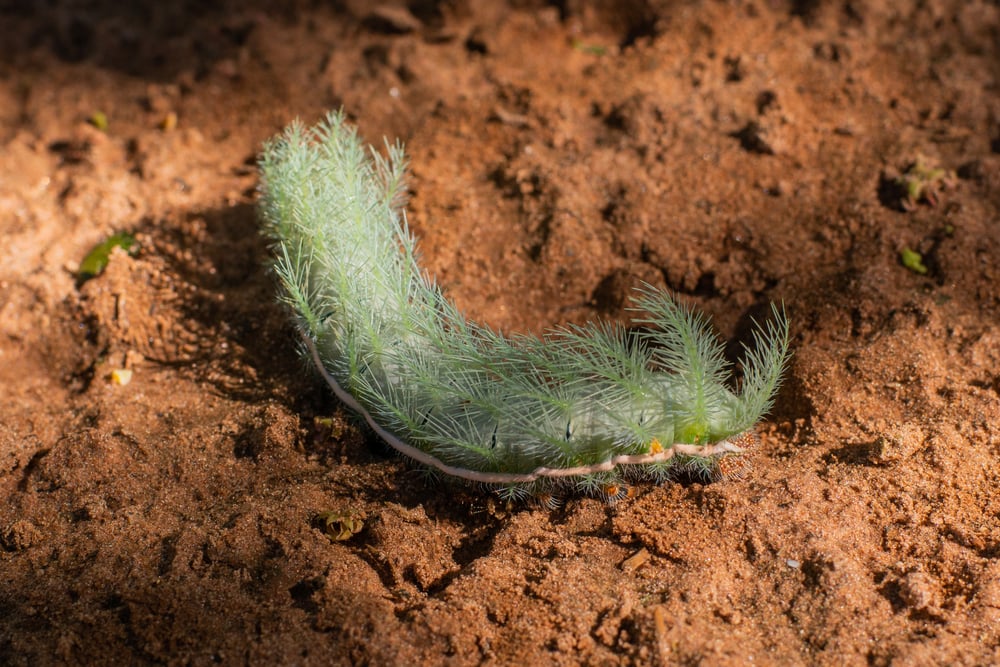
Found in southern Brazil, Uruguay, Paraguay, and Argentina, the giant silkworm moth caterpillar is one of the top poisonous species of caterpillar. Its spikes carry a high level of poison known to cause death.
The poison in this caterpillar can cause hemorrhagic symptoms which include fever, blurred vision, confusion, weakness, and loss of balance to name a few. However, severe reactions are generally experienced after 20-100 stings.
Full-grown, the caterpillar is about two inches (5 centimeters) in length. Its colors can range from brown to green, and its spikes vary in size. Their preferred habitat is deciduous forests and wooded areas.
2. Pine Processionary Caterpillar (Thaumetopoea pityocampa)

The pine processionary caterpillar has been spotted in southern Europe, North Africa, Hungary, Switzerland, Paris, and parts of the Middle East. They’re hairy with orange-brown coloring and blue bands. The clumps of hairs that cover this species vary less in length than in other hairy caterpillars.
These species of pine caterpillar live in silky nests that are the size of a football. They leave their nest only during the night time to feed on the needles of pine trees and other conifer trees. They are more likely seen in winter and early spring.
When threatened, the pine processionary caterpillar sheds its urticating hairs like darts. If these hairs come in contact with a pet or human, skin, eyes, tongue, and bronchial tubes can be severely affected.
3. Hickory Tussock Caterpillar (Lophocampa caryae)

The Hickory tussock is a white moth caterpillar with black spots. Older caterpillars can grow up to 1.7 inches (4.3 centimeter) and typically have black setae (two horn-like stiff hairs) at the front and back of its body. You can find these species in Nova Scotia, Quebec, Ontario, New Brunswick, Maine, the Carolinas, Wisconsin, Illinois, southwest Texas, and Mexico.
The longer black hairs of the hickory tussock contain venom. If those hairs get stuck in your skin and break off, they can inject a harmful chemical into your body, causing an allergic reaction.
This one hasn’t been documented for causing death. The consensus is that sometimes people can develop slight redness on their skin or an itchy, slightly burning rash after touching one of these.
4. Hag Moth Caterpillar (Phobetron pithecium)

The impressive hag moth caterpillar is also known as the monkey slug. It’s covered in short, brown hair, some of which are connected to toxic glands. It has nine pairs of fleshy appendages that should not be confused for its legs. Some of these appendages are long and curved and are not used for movement. It measures about 1 inch (2.5 centimeters) when fully grown.
Contact with the toxin of this caterpillar can result in a burning, itching sensation with redness and inflammation. They favor shaded trees and ornamental shrubs. They’ve been seen in Mississippi, Florida, Arkansas, and Nebraska.
The toxin is released upon contact with reactions and symptoms varying. They may include burning, stinging, itching, redness, and inflammation. Though allergic reactions are possible, they have been found to not be very common.
5. Io Moth Caterpillar (Automeris io)

The io moth is another interesting caterpillar found in many regions, including Maine, across southern Canada to southeastern Manitoba, the Dakotas, Nebraska, the Florida Keys, Texas, New Mexico, Colorado, and Costa Rica.
An io moth larva begins with a reddish-brown color and light lines. As the caterpillar ages, the lines become increasingly more yellowish-brown. Contact made with the spines of this one can be painful. The reaction is said to be similar to a bad bee sting.
The io moth is usually found in southern Canada, throughout the eastern United States, and eastern Mexico. Their habitat consists of deciduous forests, thorny shrubs, and even suburban areas.
6. White Cedar Moth Caterpillar (Leptocneria reducta)

The white cedar moth caterpillar has a black and copper-colored head. Its body is brown with uneven yellow stripes, fuzzy hair, and long spiky bristles. You can find this species across Australia, except Tasmania. The Cape Lilac Tree is this caterpillar’s only food source.
The hairs can cause skin irritations in humans but they have also been connected to abortions in horses. The caterpillars’ irritating hairs retain their poisonous properties even after they’ve been shed.
7. Saddleback Caterpillar (Acharia stimulea)
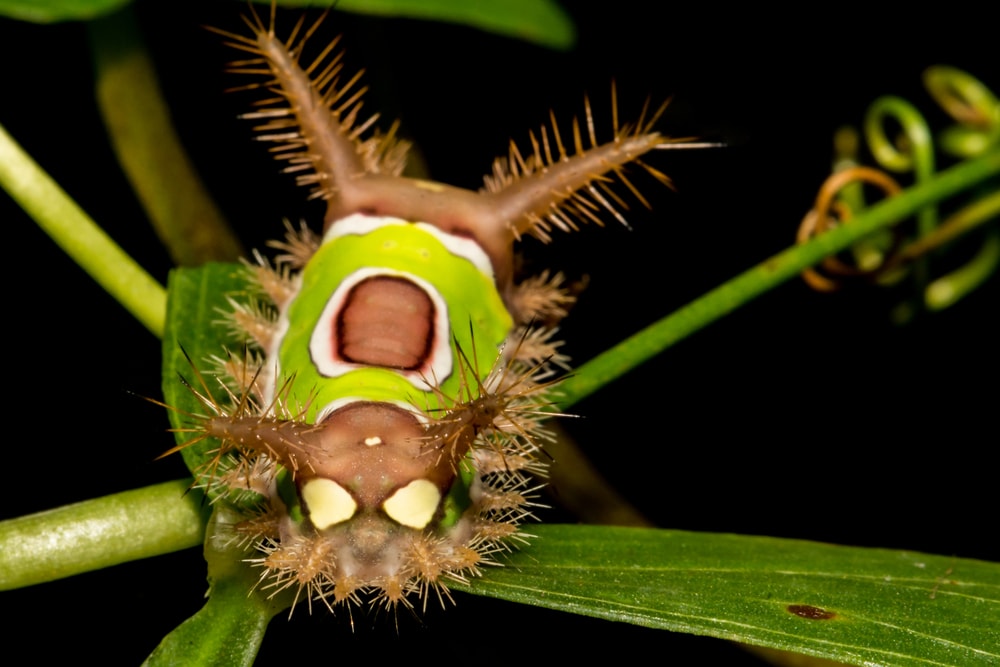
Most people will agree that the saddleback caterpillar is somewhat of a creepy-looking specimen. It’s about an inch long (2.5 centimeters), with a purple-brown body and a green saddle-shaped back.
The poisonous spines are found on four large tubercles and some smaller ones that stick out from the sides of its body. This caterpillar, like most poisonous caterpillars, is covered in short hairs that sting when touched, leaving a rash on a person’s skin.
If you find yourself in the eastern United States, including Florida, New York, and Massachusetts be on the lookout for this little guy. Some have been spotted westward to Texas, Indiana, and Kansas.
8. Puss Caterpillar (Megalopyge opercularis)

For another young insect that will blow your mind, look no further than the puss caterpillar. It’s also referred to as the woolly slug and is known as the most poisonous caterpillar in the United States.
This bushy caterpillar is found in most of Texas, Maryland, and Missouri. It tends to feed on elm, oak, and sycamore trees. Puss caterpillars vary in size from 1.2 inches to 1.4 inches (3 to 3.5 centimeters). They’re completely covered in thick tan to grayish-white hairs. The shorter spines are where the puss caterpillar discharges its poison.
Contact with its poisonous glands may result in pain, swelling, itching, anxiety, nausea, vomiting, fever, muscle cramps, and shock. If you come into contact with a puss caterpillar, it is recommended that you remove the spines by using cellophane tape. And don’t forget to immediately call your doctor.
9. Stinging Rose Caterpillar (Parasa indetermina)

Just when you think you’ve seen it all, you’re introduced to the stinging rose caterpillar. This larva is just under one inch (2.5 centimeters) in length. Its colors are vibrant with blue, orange, and white stripes. The six large pairs of tubercles are along the dorsal surface and are covered with hollow spines. These spines have detachable tips that carry their poison.
Their distribution includes New York, Florida, Missouri, and Texas. As intricate as this species is, don’t be tempted to pick one up, but feel free to take all the photos you want. From a safe distance, of course.
10. Spiny Elm Caterpillar (Nymphalis antiopa)
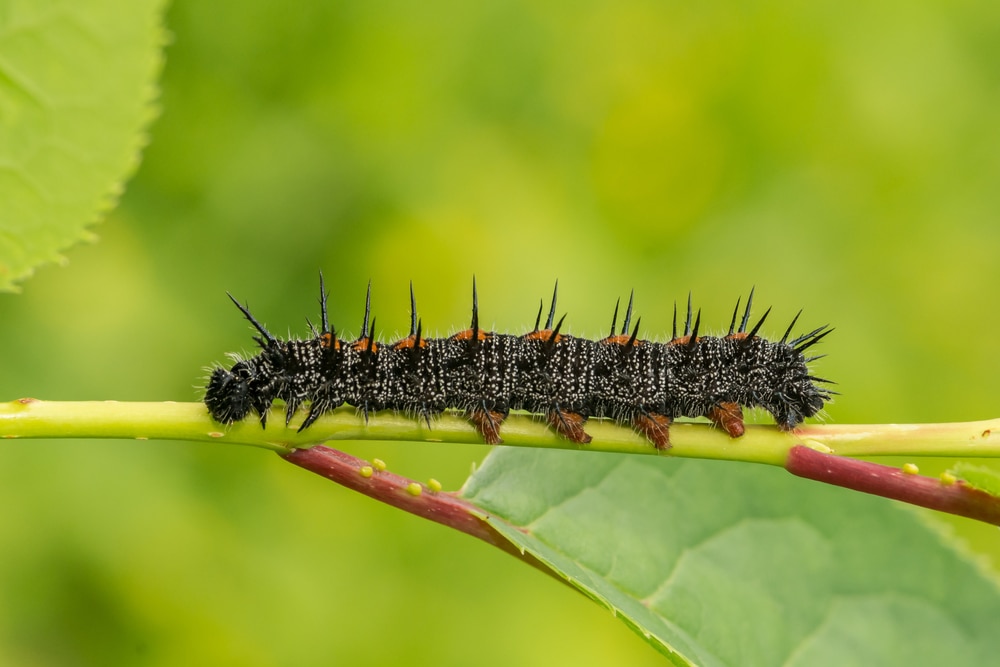
The spiny elm caterpillar has a row of bright red, or sometimes orange, dots on its back. It’s often covered by clusters of white freckles and its legs are red. These black caterpillars can grow up to two inches (5 meters) in length.
They have been seen crawling around in North America, central regions of Mexico, and temperate Eurasia, with some specimens spotted in the Gulf States and the Florida peninsula. The caterpillar has sharp-looking black spines poking from its body. These are surrounded by smaller white bristles that house its poison.
11. White Flannel Moth Caterpillar (Norape ovina)

Do your eyes deceive you?! Yes, that fuzzball you see is a white flannel moth caterpillar. As with most caterpillars, these don’t actively attack people, but if you brush against one its stinging hairs, hiding among normal hairs, can poke into the skin and break off. Reactions are dependent upon the type of caterpillar and an individual’s sensitivity. Stinging, itching, burning, rash, lesions, swelling, fever, and nausea can occur after contact.
Eleven species of flannel moth caterpillars have been distributed across North America and are generally found living in forests. Generally speaking, most flannel moths are covered in long, yellow hairs that make them seem as soft as a cat. Don’t be fooled. These stinging hairs carry toxic venom inside them.
12. Buck Moth Caterpillar (Hemileuca maia)

Buck moth caterpillars tend to be large and dark. They can grow 2 to 2.4 inches (5 – 6 centimeters) in length. They have red-colored heads and small white spots across their bodies. This species is distributed from Maine to Florida and as far west as East Texas.
Buck moth caterpillars tend to cluster on branches and move one behind another when small. The buck moth caterpillar prefers oak trees but has seen on willow trees, wild cherry trees, and rose bushes.
The spines on this caterpillar are associated with venom glands. When stung, pain is immediate and can include itching, swelling, and redness. Welts on the skin can remain visible for 1-7 days after contact.
13. American Dagger Caterpillar (Acronicta americana)

The American dagger caterpillar was appropriately named. Its coloring can range from yellow to pale yellow, and white. Its fuzzy exterior makes it tempting to pet but there are consequences to suffer should you touch one of these. The hairs sticking up like daggers are bristled and can grow over an inch (2.5 centimeters).
This hairy caterpillar delivers a painful burning rash when contact is made. Toxins inside the hairs are believed to cause a stinging sensation that may develop into a rash, but no serious reactions have been recorded.
It can be found throughout Eastern North America in woodlands, forests, and swampy bottomlands. They prefer locations that are abundant with trees, shrubs, hedges, bushes, and vegetation.
14. Laurelcherry Smoky Moth Caterpillar (Neoprocris floridana)
When fully grown, laurelcherry smoky moth larvae reach approximately half an inch (1.3 centimeters). Dorsal areas are white and black, with lateral areas of the body being colored in yellow. It’s found throughout Florida except for the Keys and has been reported in some parts of Alabama.
The small, short, yellowish hair that covers its body is where the danger rests. Reactions associated with its sting include pain, followed by a rash resulting in blisters. This caterpillar has a small hood that it uses to hide its head.
15. Smeared Dagger Moth Caterpillar (Acronicta oblinita)

The smeared dagger moth caterpillar is also known as the smartweed caterpillar. It’s often dark with back lumps that bear tufts. Another interesting feature of this caterpillar is its distinctive yellow, V-shaped markings.
These can be seen in eastern North America, south to Florida and Texas, as well as Nova Scotia to British Columbia. As harmless as they seem, they shouldn’t be picked up. Symptoms due to their hair include a stinging sensation, burning, itching, and possible rash.
16. Bag-shelter Moth (Ochrogaster Lunifer)

The Bag-Shelter Moth, like his close relatives, has spiny hairs that make it toxic. They’re grey and hairy with a brown head. Often, one can catch them walking in parade-form. They have been seen in groups of up to 200. Each Caterpillar when it walks, leaves a thread of silk from its sphindet near its mouth.
You can find the Bag-Shelter Moth all across Australia in semi-arid woodlands and coastal vegetation. Generally, a problem for horse breeders, they can still cause quite a bit of commotion to others. Should their hairs be ingested after the caterpillar sheds them, a world of pain will follow. Especially, for animals.
17. Monarch Caterpillar (Danaus plexippus)

Our next friend is from one of the most common butterflies, the Monarch. What makes the Monarch caterpillar and butterfly so special is that the caterpillars are able to eat leaves of the milkweed plant. After consuming the plant, the caterpillar stores the glycosides in their bodies, which makes the caterpillar toxic. Especially, for the unlucky bird that eats it.
Monarchs are big fans of the Milkweed plant. If you’d like to see one, you should head where their primary source of food grows. Typically, this is in well undeveloped agricultural fields, meadows, and where vegetation has been allowed to grow undisturbed. Sometimes you may find them along ditches or roads. Locations with warm spring weather are best.
You May Also Like: Learn These 29 Different Types of Butterfly and Its Life Cycle with Photos, Facts, Infographics, and more!
You May Also Like: This Is Your Ultimate Guide To These 16 Different Types of Salamanders with Photos, Infographics, Facts and more!
Caterpillar Life Cycle

Metamorphosis is the drastic physical change insects endure before becoming their adult version. Each stage only lasts a few weeks or a couple of months depending on the species and other elements. The stages of metamorphosis for caterpillars are as follows:
Stage 1: The Egg

Tiny eggs are laid in spring, summer, or fall on plants by adult female moths and butterflies. They lay many eggs at once so that chance of survival increases.
Stage 2: The Caterpillar

The caterpillar hatches from the egg and immediately begins to feed. As it grows, it will shed its skin 4-5 times. The food they eat during this time is stored and used when they are adults.
Stage 3: The Pupa

When the caterpillar is fully grown, it will stop eating and slowly turn into a pupa. A pupa in the butterfly world is known as a chrysalis and comes in the form of silky cocoons in the moth world. They are typically suspended under a branch, leaves, or underground.
Stage 4: Adulthood
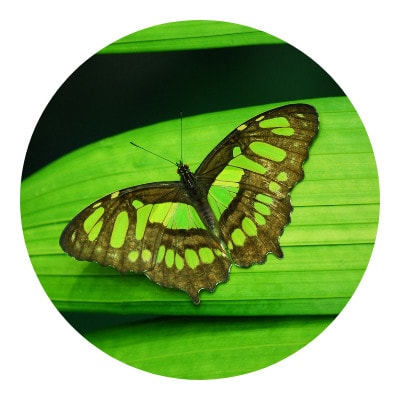
Special cells that were present in the larva grow very quickly in the pupa stage, becoming legs, wings, eyes, and other parts of the adult. This is the final stage of its transformation.
A lot of adult butterflies and moths live between one or two weeks. Some live a mere nine hours. Species that hibernate during the winter may live for several months.
You May Also Like: Different Types of Stink Bugs with Photos, Facts and Infographic!
What Do Caterpillars Eat?
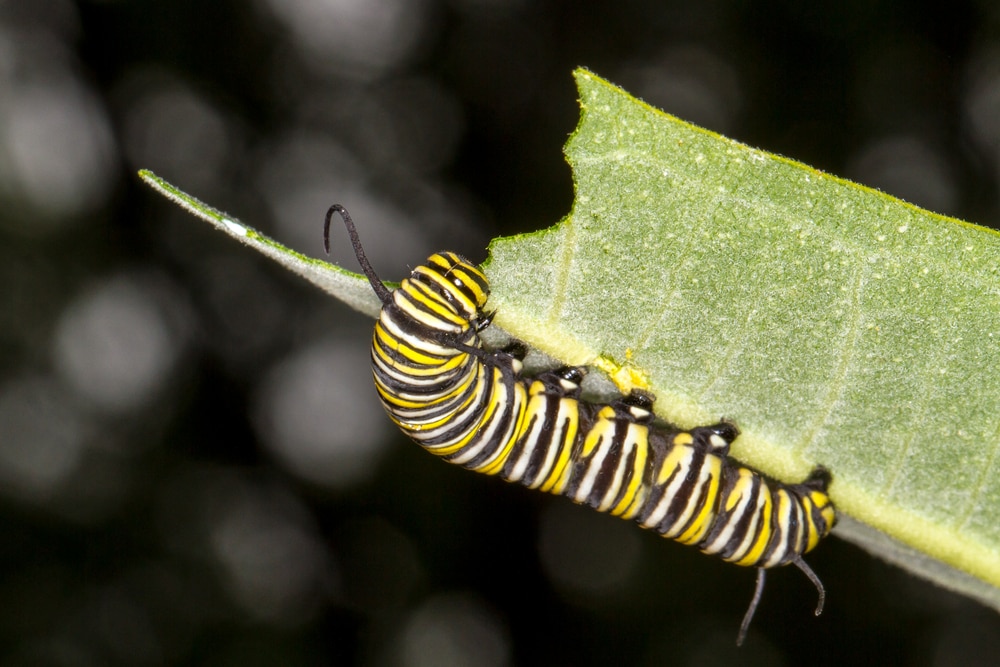
You will find that most caterpillars feed almost exclusively on plants. They will feast on leaves, seeds, or flowers. Caterpillars don’t drink water. Instead, they quench their thirst through the plants they eat.
Depending on the species and the region they are found in, you may also see them eating honeycomb, grass, bark, twigs, ants, moss, and sometimes each other.
You May Also Like: These Are The 30 Toxic Plants You Should Be Aware Of with Photos, Infographics, Guide, and more!
Poisonous Caterpillars Facts

Now that we’ve covered some of the world’s top poisonous caterpillars, let’s metamorph into the cute, funny, and interesting facts about caterpillars in general.
You may also like: Check out These 19 Unique Types of Eels and Learn Everything About Them: Complete with Images, Descriptions, Classifications, and More!
Caterpillars and Symbolism

Some people see caterpillars as pests who eat their plants, but there are ways to coexist with them. They have been treasured for many decades in different cultures and are considered an omen of good luck, strength, health, and joy. They are a reminder that transformation leads to new horizons.
Caterpillars can’t carry weapons to protect themselves from dangerous predators. Their source of protection lies in what abilities nature has given them. Yes, poisonous caterpillars can be scary, but like humans, they deserve to live.
When out in the wilderness, mind your step and what you brush up against. Should you see one, simply ignore it or admire it from a safe distance. After all, they add so much color and excitement to our lives!
Perhaps, caterpillars are proof that you can go through a great deal of darkness and still become something beautiful.
You may also like: Learn the 13 Different Species of Snakes in PA: Complete with Images, Facts, Descriptions, and More!
Caterpillars Frequently Asked Questions
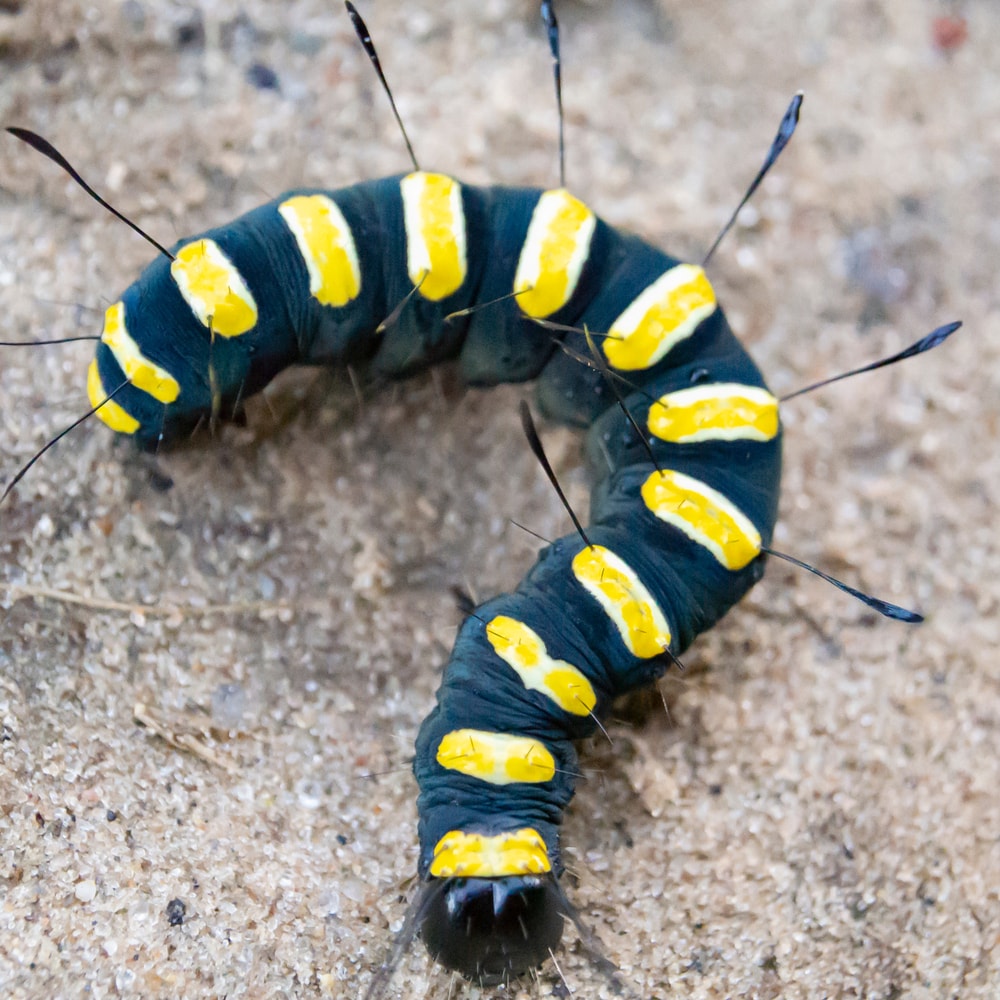
1. Do Caterpillars Migrate?
The extent of a caterpillar’s migratory habit is crossing a road to find food. After their fourth stage in the metamorphosis process, the adult moth or butterfly may migrate to a warmer climate. The monarch and painted lady butterflies have been known to travel the furthest.
2. What Are Caterpillars’ Environmental Threats?
The biggest threat to caterpillars is habitat destruction. Many species are now critically suffering due to residential, commercial, and animal agricultural development. They need very specific plants to lay their eggs, feed and build nests.
3. What Impact is Climate Change Having on Caterpillars?
Research has seen caterpillars hatching earlier and earlier. This could have a domino effect on other organisms that caterpillars rely on, such as trees, other insects, songbirds, and even mammals.
When caterpillars hatch from their eggs in early spring, they use the sun to raise their temperatures so they can complete development in late spring or early summer. However, too much heat has an unfavorable result.
If temperatures keep rising, scientists fear that caterpillars won’t be able to manage the increasingly hot summers. The mild winters could also be bad, causing them serious stress.
In the end, if caterpillars begin to respond out of sync, they won’t be the only thing affected.








